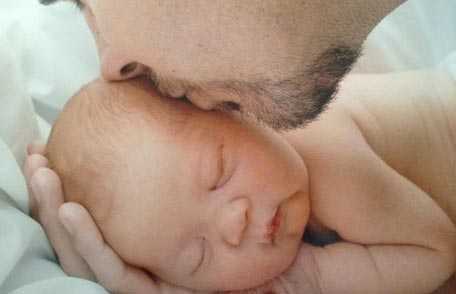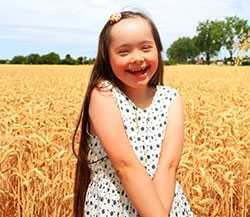Down Syndrome Facts
 Down syndrome is a genetic condition some babies are born with and have the rest of their lives. Read one mother’s reflection on the birth of her son, Caleb, who has Down syndrome. You can also learn what CDC is doing to improve the lives of people with Down syndrome.
Down syndrome is a genetic condition some babies are born with and have the rest of their lives. Read one mother’s reflection on the birth of her son, Caleb, who has Down syndrome. You can also learn what CDC is doing to improve the lives of people with Down syndrome.
What is Down Syndrome?
People with Down syndrome are born with an extra chromosome. Chromosomes are small “packages” of genes in all cells of the body. Genes are the body’s instruction manual, telling each of the cells what to do. Genes shape a person’s traits such as eye color, blood type, and risk of disease. Genes also determine how a baby’s body forms during pregnancy and how the baby’s body functions as it grows in the womb and after birth. Typically, a baby is born with 46 chromosomes. Babies with Down syndrome have an extra copy of one of these chromosomes, chromosome 21, and thus they have an extra copy of all of the genes packaged in chromosome 21. The extra genes cause all of the features of Down syndrome. A medical term for having an extra copy of a chromosome is “trisomy,” so another name for Down syndrome is trisomy 21.
How Many Babies Are Born with Down Syndrome?
About 1 in 700 babies are born with Down syndrome in the United States.1 That’s about 6,000 babies with Down syndrome born in the United States each year.
Caleb’s Story
There are many different emotions a mother and father go through when their child is born with a disability, but the emotion that most often gets overlooked in the midst of tests and uncertainties is the simple beautiful joy of having a baby. Our son Caleb was born with Down syndrome. I did not wish to hide or ignore the diagnosis, but I found it difficult to celebrate as countless tests and pending results kept knocking at the door.
Each time I looked at my baby boy, all I could see was a marvelous creation. He was not like any other baby—he was uniquely himself and he was altogether mine. Having a child with disabilities gives you a new cup by which to measure; a simple smile is no longer simple, it is a triumph and a glorious sight, and a common milestone on the doctor’s chart becomes the very corner stone of great hopes. We do not know how far our children will go, but we do know the depth of our love. I cherish my little boy each day and don’t waste the present worrying about the future.
CDC would like to thank Stacy, Caleb’s mother, for sharing her family’s story. Access more stories written by families affected by Down syndrome.

Even though people with Down syndrome might act and look similar, each person has different talents and the ability to thrive.
CDC Activities to Improve the Lives of People with Down Syndrome
CDC’s National Center on Birth Defects and Developmental Disabilities (NCBDDD) works with partners to learn about Down syndrome. We track information about people with Down syndrome and do research to improve the lives of people with Down syndrome and their families.
- Tracking: Tracking where and when individuals with Down syndrome are born gives us important clues about opportunities to improve their health outcomes and help plan for services for them and their families.
- Research: To understand the impact that Down syndrome has on children and their families, CDC and its partners conduct studies on health service use, survival, and other conditions that people with Down syndrome might have, such as autism or Alzheimer disease.
- Improving the lives of individuals with Down syndrome: CDC provided funding to develop Brighter Tomorrows, an initiative to educate healthcare providers on how to counsel families of children with Down syndrome.
References
- Parker SE, Mai CT, Canfield MA, Rickard R, Wang Y, Meyer RE, Anderson P, Mason, CA, Collins JS, Kirby RS, Correa A, National Birth Defects Prevention Network. Updated national birth prevalence estimates for selected birth defects in the United States, 2004-2006. Birth Defects Res A Clin Mol Teratol. 2010;88:1008-16.
More Information
More Information
To learn more about Down syndrome, please visit:
To read summaries of articles on Down syndrome published by CDC, please visit:
- Key Findings: Growth Charts for Children with Down Syndrome in the United States
- Key Findings: Frequency of Trisomy Conditions using Birth Defects Tracking Programs in the United States, 2006-2010
- Key Findings: Prevalence of Down syndrome in the United States
- Key Findings: Trends in survival among children with Down syndrome in 10 regions of the United States
- Page last reviewed: March 20, 2017
- Page last updated: March 20, 2017
- Content source:
- National Center on Birth Defects and Developmental Disabilities, Division of Birth Defects and Developmental Disabilities
- Page maintained by: Office of the Associate Director for Communication, Digital Media Branch, Division of Public Affairs




 ShareCompartir
ShareCompartir